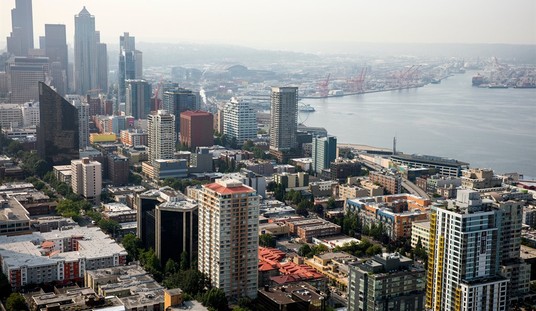This is a touchy subject which is already drawing some protests, but the New York City police department (NYPD) has brought back a policy which had largely been banned for quite a while. In fact, they aren’t the only ones. A number of other cities are doing it as well. The change allows officers to fire at a suspect in a moving vehicle, but only under certain circumstances, specifically when a terrorist (domestic or foreign) is using a vehicle to ram into a crowd. (WaPo)
Two decades ago, amid a growing controversy over police shootings in the nation’s capital, officers in the District were largely barred from firing at moving cars…
Now, however, several major cities are loosening those rules to deal with a new threat: terrorists in trucks mowing down and killing pedestrians. Police in Washington, New York City, Chicago and Las Vegas have begun allowing officers to fire at moving vehicles to stop such ramming attacks. While concern about the tactic remains, authorities say that, in extreme instances, trying to shoot the driver might be the only way to save lives.
“We have to balance the threat to the community with the idea we don’t want to use fatal force unless we absolutely have to,” said D.C. Police Chief Peter Newsham. “It’s really important to make sure officers completely understand this is a special circumstance, a last resort, but one that may be necessary.”
The arguments made by many activists against allowing police to fire into a moving vehicle are, to a degree, understandable. Particularly in conditions of poor lighting, the cops’ accuracy is going to be impaired, increasing the chance that they’ll hit someone else in the vehicle. Depending on the firearm being used, the angle and several other factors, a ricochet is possible, endangering bystanders. And hitting a moving target is a tough shot to begin with, leading to the same potential for collateral damage.
But as with most everything in life, there’s a time and a place. The WaPo article lists one of the most common examples which is when a suspect is firing at the police or bystanders from a vehicle. But the ramming situation is equally dangerous and calls for an extreme response. And we’re not just talking about terrorists here. In case you missed it, there was a case out of Miami, Florida last October where college student Cariann Hithon was driving a BMW while extremely drunk and slammed into several parked cars. She came to a stop and police quickly approached. Despite the fact that everyone claimed she was “a good kid with a bright future” what followed was a nightmare. (Miami Herald)
Uniformed Miami Beach police officers walked up. For a brief few seconds, it appeared nothing more than a routine, if harrowing, car accident on South Beach.
Then the car screeched forward.
As onlookers screamed in terror, the black BMW sedan plowed into a Miami Beach cop standing in the middle of the street, tossing him to the pavement, video footage from the scene showed. Another officer instantly let loose three quick shots. The BMW swerved and crashed on 12th Street just yards away.
Hithon was dead at the scene. The kid probably panicked, but what were the police supposed to do? This wasn’t a terror attack, but she had already hit multiple vehicles and plowed through pedestrians, including one group of cops. Letting her speed off further into the city was probably going to end up with somebody else dead.
The whole point here is that this is a policy which needs to be trained carefully, with officers understanding that it’s a last resort and not part of normal protocol. But when someone is using a vehicle as a weapon in a crowd, there simply may not be any other choice.








Join the conversation as a VIP Member